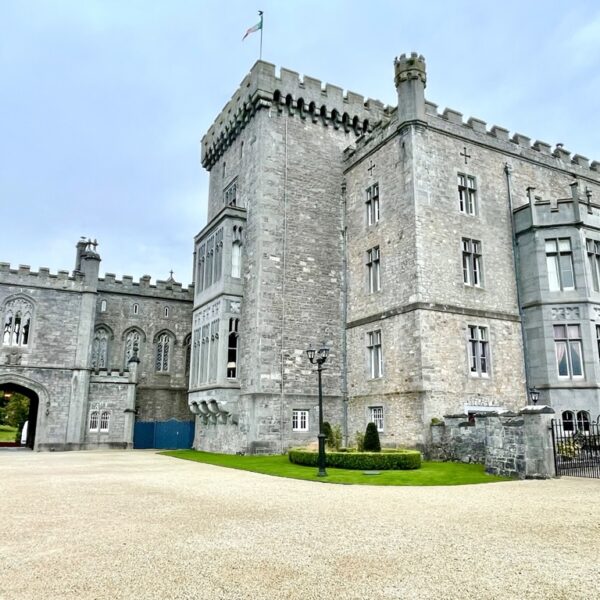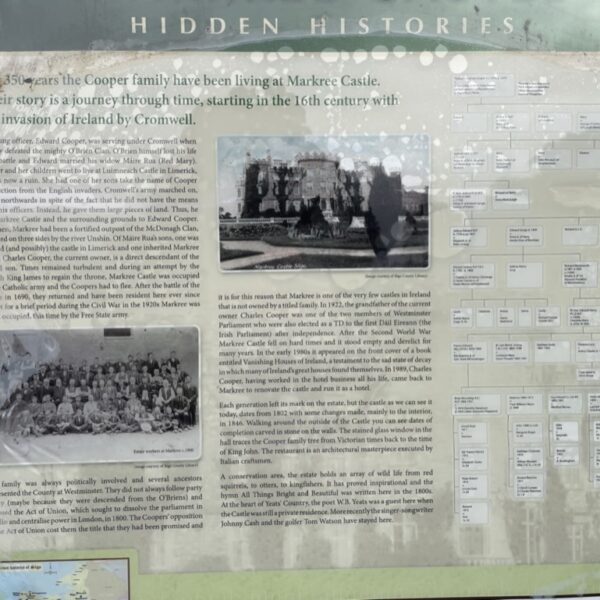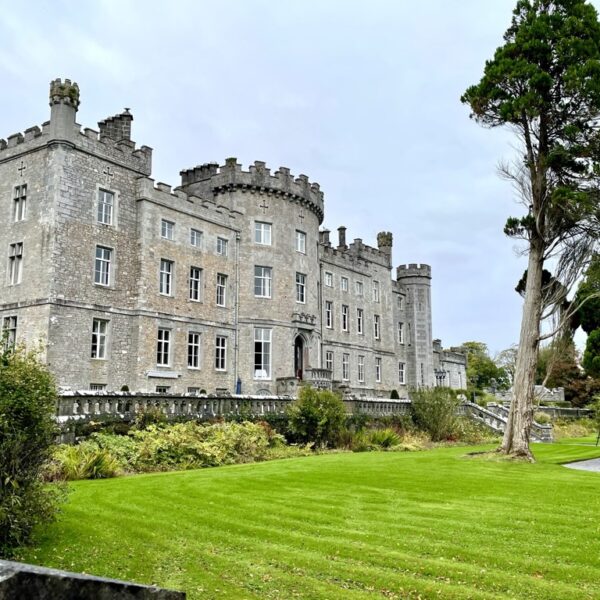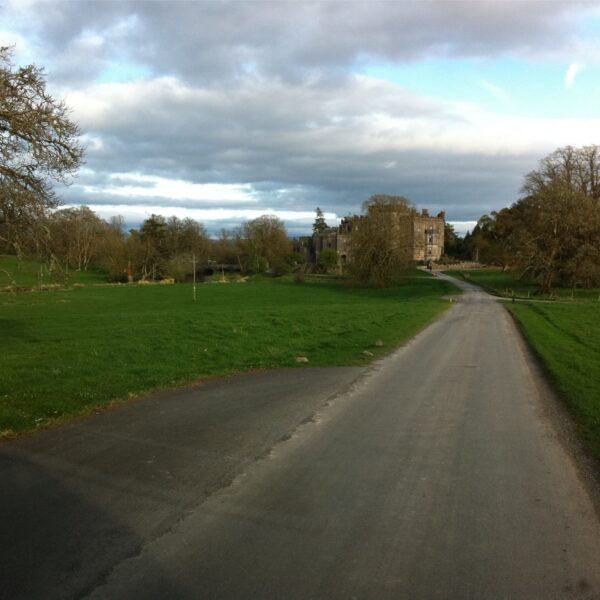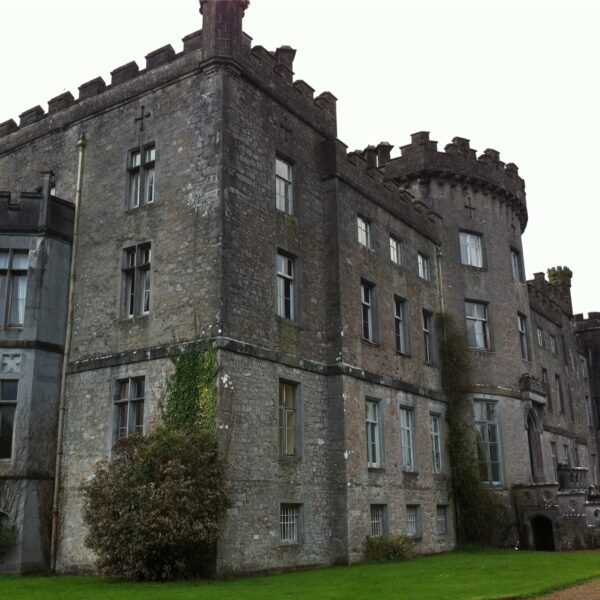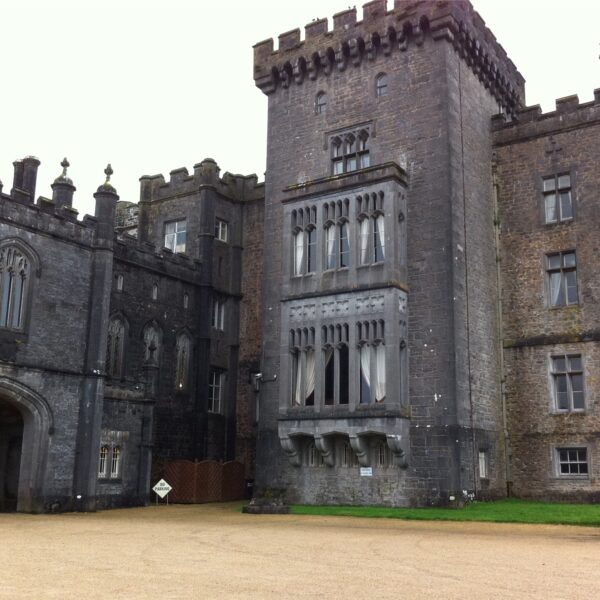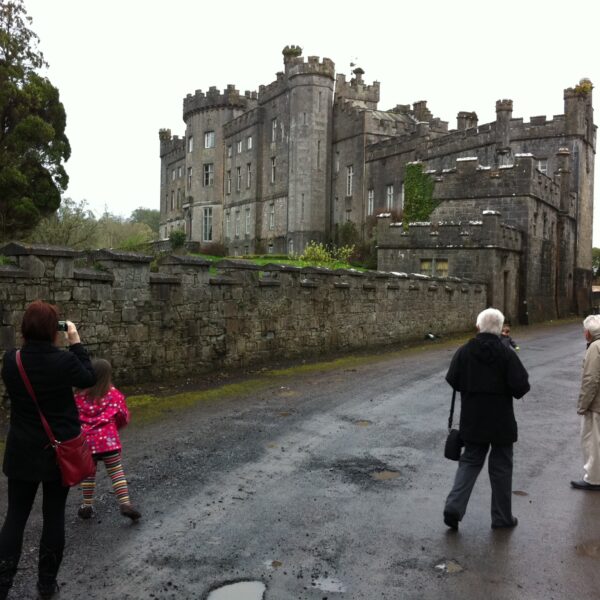Markree Castle
October 22, 2024 2025-07-10 17:13Markree Castle
Markree Castle
A Sentinel of Sligo’s Storied Past and the Ó Dubhda Legacy
Markree Castle, nestled amidst the verdant landscapes of County Sligo, stands as a testament to centuries of Irish history, its stones echoing tales of shifting power, architectural grandeur, and enduring legacies. While its modern form is a celebrated hotel, its roots delve deep into a past shared by the ancient Gaelic clans of Connacht, including the Ó Dubhda lineage. This page explores Markree Castle’s fascinating journey, placing it within the rich tapestry of ancestral lands and the broader narrative of Gaelic resilience.
I. Overview: Journey Through Time at Markree Castle
Markree Castle, gracefully situated near the village of Collooney in County Sligo, is a magnificent Gothic-style structure that has witnessed profound transformations since its earliest fortifications. Its strategic location, partially moated by the River Unshin, made it a vital outpost in the historical landscape of Northwest Connacht. From its origins as a defensive fort in the 14th century to its evolution into a grand manor, a renowned observatory, and now a luxurious hotel, Markree Castle embodies the complex and often turbulent history of this region.
For the Ó Dubhda clan, whose ancestral lands encompassed much of modern-day Sligo and Mayo, Markree Castle represents not a direct ancestral stronghold, but a significant landmark within the historical sphere of influence where Gaelic power ebbed and flowed. The history of Markree Castle exists within the broader historical and geographical context of the Ó Dubhda clan’s ancestral lands. This geographical overlap means that while the Ó Dubhda clan did not directly own Markree, their histories are intrinsically linked by the broader regional events and power dynamics that shaped Connacht. This positions Markree Castle not as an isolated historical entity, but as an integral part of the larger historical landscape of Connacht that was profoundly shaped by the presence, struggles, and enduring legacy of various Gaelic clans, including the Ó Dubhda.
II. The Storied Past: Markree Castle Through the Ages
The history of Markree Castle is a chronicle of shifting allegiances, architectural evolution, and the enduring impact of broader historical forces. This section delves into the castle’s chronological journey, highlighting key events and the figures who shaped its destiny.
A. Early Foundations: A Fortified Outpost in Gaelic Lands
The earliest iteration of Markree Castle dates back to the 14th century, not as the grand structure seen today, but as a fortified outpost. Its primary purpose was to guard a crucial ford on the Unshin River, a strategic crossing point in the landscape of County Sligo. At this time, the castle and its surrounding lands were under the control of the Irish McDonagh Clan. The McDonaghs were a prominent Gaelic family in Sligo, holding sway as Lords of Tirreril and Corran, with their power extending across parts of Sligo and Roscommon. This period reflects the complex web of Gaelic clan territories and their defensive structures that characterized medieval Ireland. While details of its initial construction are sparse, it would have been built for utility and protection, a common characteristic of the fortifications established by clans like the McDonaghs and, indeed, the Ó Dubhda clan, who adapted and built various types of defensive structures across their territory.
B. Shifting Tides: The Cooper Family and the Act of Settlement
A significant turning point for Markree Castle came in 1663. Following Oliver Cromwell’s campaigns in Ireland, the original 14th-century fort and its lands were allotted to Cornet Edward Cooper under the 1662 Act of Settlement of King Charles II. This transfer occurred after Cooper’s army defeated the O’Brien Clan, during which Conor O’Brien was killed. Edward Cooper subsequently married O’Brien’s widow, Marie Rua, and one of her sons, who adopted the Cooper surname, eventually inherited Markree. By the end of the 17th century, Markree was officially recognized as a manor, and the Cooper family rapidly ascended to become one of the largest landowners in Ireland. By 1727, after acquiring Lord Collooney’s estate, their holdings peaked at an astonishing 40,000 acres, firmly establishing Markree Castle as the heart of their vast estate. This expansion saw the transformation of the fort into a much more comfortable and spacious manor house.
The transfer of Markree Castle from the native Irish McDonagh clan to the Cooper family in 1663 under the 1662 Act of Settlement was not an isolated incident. This was a direct consequence of the Cromwellian conquest of Ireland and the subsequent English policies aimed at confiscating land from native Irish landowners and redistributing it to loyal English settlers. This systemic dispossession fundamentally reshaped the social, economic, and political landscape of Ireland, including the ancestral territories of the Ó Dubhda clan in Sligo and Mayo. By detailing Markree’s change of ownership, the report underscores the shared historical experience of land loss and the broader context of conflict and displacement that defined this period for the Ó Dubhda clan and their contemporaries. This highlights the profound and widespread impact of colonial policies on all Gaelic clans.
C. Expansion, Innovation, and Modern Era
The early 19th century marked a period of major architectural enhancement for Markree Castle. In 1802, the castle largely seen today began to take shape, built over the raised basement of the former Cooper mansion. Eminent architect Francis Johnson, known for his work on Dublin’s GPO, the castellated gate to the Royal Hospital in Kilmainham, and the chapel in Dublin Castle, was employed to extend, improve, and enlarge Markree, transforming it into the castellated mansion it remains today.
A unique chapter in the castle’s history unfolded in 1834 with the construction of an observatory within its grounds. This observatory housed the world’s first cast-iron telescope, featuring the largest refractor lens of its time. In 1848, the castle gained international acclaim when a minor planet or asteroid named Metis was discovered there – the first and only asteroid discovered in Ireland until 2008.
The 20th century brought significant challenges. The Cooper family’s landholdings were drastically reduced from 40,000 to 5,000 acres. Markree Castle suffered considerable damage during the Irish Civil War (1921-1922) and lay largely unused until 1947. However, in the 1980s, Charles Cooper, the 10th generation of the family to reside there, along with his wife Mary, undertook a loving renovation to transform the derelict castle into a hotel. This new chapter saw distinguished guests like Johnny Cash and June Carter stay at the castle in 1990. In 2015, the Coopers sold Markree Castle to the Corscadden Family, renowned hoteliers, who completed extensive renovations, reopening it in March 2017 as a premier luxury hotel and event venue.
The continuous investment and significant architectural expansion of Markree Castle by the Cooper family directly correlates with their rapidly increasing wealth and vast landholdings. This contrasts sharply with the fate of many Ó Dubhda clan castles, which are explicitly noted as being in ruins today. While the Coopers built a grand, modernizing estate, reflecting their ascendant power and stability, the Ó Dubhda’s legacy is often found in the remnants of older, more purely defensive structures, reflecting their different historical trajectory. This illustrates the diverging paths of power and prosperity between the new Anglo-Irish ascendancy and the dispossessed Gaelic aristocracy. Markree Castle’s architectural evolution thus serves as a tangible symbol of the profound shift in power dynamics across Connacht, where one family’s gain in status and comfort directly mirrored another’s decline and struggle for preservation.
The following table provides a concise overview of Markree Castle’s historical journey:
Markree Castle Historical Timeline (Key Periods & Occupants)
Period/Date | Key Event/Development | Primary Occupant/Owner |
14th Century | Original fort guarding Unshin River ford | McDonagh Clan |
1663 | Acquired by Edward Cooper under Act of Settlement | Cooper Family |
Late 17th Century | Transformed into a manor, Cooper family becomes major landowners | Cooper Family |
Early 19th Century (from 1802) | Major remodel by Francis Johnson into castellated mansion | Cooper Family |
1834-1848 | Observatory built, asteroid Metis discovered | Edward Joshua Cooper |
Early 20th Century | Landholdings reduced, castle damaged during Irish Civil War | Cooper Family |
1980s-2015 | Renovated into a hotel by Charles & Mary Cooper | Charles & Mary Cooper (10th Gen) |
2015-Present | Sold to Corscadden Family, extensive renovations, reopened as luxury hotel | Corscadden Family |
III. Architectural Marvels: Unveiling Markree Castle’s Design
The physical structure of Markree Castle tells its own story, reflecting changing priorities from defense to domesticity and aesthetic grandeur.
A. From Fort to Manor: Early Structures
The earliest form of Markree, a 14th-century fort, was likely a more functional and robust defensive structure, typical of Gaelic strongholds guarding strategic points like river fords. While details of its initial construction are sparse, it would have been built for utility and protection, a common characteristic of the fortifications established by clans like the McDonaghs and, indeed, the Ó Dubhda clan, who adapted and built various types of defensive structures across their territory. By the late 17th century, as the Cooper family consolidated their power, this fort was transformed into a more comfortable manor house, reflecting a shift from pure defense to domesticity and status.
B. The Grand Transformation: 19th-Century Gothic Revival
The Markree Castle largely recognized today is a product of significant early 19th-century remodelling, primarily undertaken by the renowned architect Francis Johnson. Built in 1802 over the raised basement of the previous mansion, Johnson’s work, often with Italian craftsmen, transformed it into a castellated mansion, embracing the Gothic Revival style. Later additions around 1870 further enhanced its Gothic character, including an impressive porte-cochere, a battlemented and machicolated square tower, and a chapel on the north front, along with a two-storey canted bay window on the west. A central crenellated projecting bow and an ornamental doorway leading to the garden front were added in 1896. The castle’s monumental structure features a main roof hidden behind a battlemented parapet wall, dressed limestone, corbelled chimney stacks, and octagonal turrets, all contributing to its imposing and elegant appearance.
Markree Castle’s architectural evolution from a “fort” to a “comfortable manor house” and then to a “castellated mansion” with Gothic Revival elements is not merely a stylistic progression. The initial “fort” was built for pure defensive function. The subsequent transformation into a “manor” reflects the Cooper family’s established security and growing wealth, allowing them to prioritize comfort and domesticity. The 19th-century “Gothic Revival” additions, while grand, were more about aesthetic and romanticized notions of “castle” rather than military necessity, as the need for active defense had largely diminished. This demonstrates how castle architecture adapts to the changing needs, aspirations, and political stability of its owners, moving from pure function to a blend of status, comfort, and historical romanticism. This highlights how architectural styles in Ireland, particularly for grand estates, mirrored the changing political and social landscape. The Ó Dubhda clan’s own castles, in contrast, were primarily built for defense and holding territory against superior forces, reflecting a different set of priorities and a more continuous state of conflict. The contrast underscores the divergent experiences of Gaelic and Anglo-Irish families in the shaping of Ireland’s built heritage.
C. Enduring Elegance: Modern Adaptations
Beyond the main castle, the estate boasts other notable architectural elements, such as the impressive detached stone stable yard, known as the ‘New Yard,’ built around 1830. This square-plan complex features a castellated entrance front with crenellated parapets, breakfronts, and corner towers, showcasing fine masonry work. Inside the castle, a grand entry staircase leads to a wonderful hall, from which a second carved wood staircase ascends to the guestrooms. A particularly striking feature on the landing is a huge stained glass window that meticulously traces the Cooper family tree. While the castle stood empty and derelict for a period after the Second World War, its transformation into a hotel in 1989 and subsequent extensive renovations by the Corscadden family in 2017 have ensured that its historic charm, period features, and elegant decor are beautifully preserved, offering a blend of old-world grandeur and modern luxury. The castle also features an onsite chapel, lined with dark wood panelling and beautiful stained glass windows, adding to its unique character.
IV. Legends and Lore: Tales from Markree Castle’s Shadows
While Markree Castle may not be steeped in ancient Gaelic legends in the same vein as some of the ancestral strongholds of the Ó Dubhda, its more recent history is rich with tales of its distinguished occupants and visitors, and its story is deeply intertwined with the broader historical narrative of ancestral lands.
A. Markree’s Own Echoes: Stories of the Cooper Family and Distinguished Visitors
The castle served as the ancestral seat for ten generations of the Cooper family, a remarkable continuity that is even commemorated in a stunning stained-glass window depicting their family tree. The castle’s beauty and serene setting have long inspired creative minds. The renowned poet W.B. Yeats found inspiration in the romantic landscape surrounding Markree. Furthermore, Mrs. Cecil Alexander, captivated by the magnificent view from the castle terrace in 1848, was moved to write the beloved hymn ‘All Things Bright and Beautiful’. In more recent times, the castle has welcomed notable figures such as the legendary American singer Johnny Cash and his wife June Carter, who stayed there in 1990, adding a modern chapter to its storied guestbook. These associations underscore Markree Castle’s enduring appeal as a place of inspiration, reflection, and hospitality.
B. The Ó Dubhda Legacy: A Broader Historical Context
It is important to clarify that Markree Castle, in its documented history, was a stronghold of the McDonagh clan before passing to the Cooper family, rather than a direct ancestral seat of the Ó Dubhda clan. However, its story is deeply intertwined with the broader historical narrative of ancestral lands in County Sligo and County Mayo.
The Act of Settlement of 1662, which facilitated the transfer of Markree to the Cooper family, was a pivotal moment that saw vast swathes of Irish land confiscated from native Gaelic families and redistributed to those loyal to the English Crown. This period profoundly impacted all Gaelic clans, including the Ó Dubhda, who, despite their ancient lineage and formidable network of fortifications, faced immense pressure and dispossession. By explicitly stating Markree’s ownership history and then pivoting to the Ó Dubhda’s own extensive castle network and their resilience in the face of similar challenges, the report reframes Markree’s story within the Ó Dubhda’s larger narrative of survival and enduring presence in the region. This transforms the absence of a direct connection into a powerful thematic link, emphasizing shared historical experiences and the Ó Dubhda clan’s continuous claim to the broader regional history.
The Ó Dubhda clan, known by various spellings, traces its lineage back over 1500 years to before the time of St. Patrick, making the surname one of the oldest in Europe. For centuries, the clan were the Kings of Uí Fiachrach Muaidhe, a powerful maritime force that successfully held territory against formidable adversaries like the Burkes and Birminghams. The Ó Dubhda maintained a formidable network of “20 castles” across Mayo and Sligo, utilizing traditional Gaelic ringforts, adapted Norman castles, and purpose-built tower houses. While many of these, such as the castles at Carn Amhalghaigh and Castleconor, are now ruins, they stand as enduring symbols of strategic prowess and enduring presence.
The story of Markree Castle, therefore, serves as a powerful reminder of the dramatic shifts in power and land ownership that shaped the homeland. It stands as a contemporary to the clan’s own struggles and resilience, a testament to the enduring spirit of the Gaelic heritage that continues to define this historic region. The clan’s patronage of scholars like the MacFirbises and the preservation of crucial historical works such as the Great Book of Lecan was a deliberate and vital act to record, legitimize, and maintain their history, genealogies, and cultural identity during periods of intense external pressure and dispossession. This dedication to cultural preservation ensured that their identity and narrative endured even as their political and territorial dominance waned. This underscores that resistance against conquest was not solely military; it was also profoundly cultural and intellectual. The ability of the Ó Dubhda clan to maintain and recount their history, including the existence of their extensive castle network (even if many are now ruins), allowed them to retain a sense of identity, legitimacy, and continuity that transcends physical land ownership, continuing to this day through platforms like odubhda.org.
V. Visiting Markree Castle Today: A Glimpse into the Past
Markree Castle today offers a unique opportunity to experience a blend of rich history and modern hospitality, standing as a testament to the ongoing story of County Sligo.
A. Location & Access
Markree Castle is located in Collooney, County Sligo, Ireland. It is nestled in the stunning North West of Ireland, along the route of the world-famous Wild Atlantic Way. The castle is approximately 12km south of Sligo City, easily accessible off the main N4/M4 road connecting Sligo and Dublin.
Markree Castle operates as a luxurious hotel and exclusive-hire venue. While it is a private property, it welcomes guests for overnight stays, weddings, and events. Access for wedding guests is typically from 2pm onwards, with check-in from 3pm. Visitors can reach the castle by bus from Sligo town to Collooney (approximately 20 minutes, followed by a 10-minute walk), by taxi from Sligo (approximately 15 minutes), or by car via the N4. As a hotel and exclusive venue, specific “opening hours” and “admission” fees for general public viewing are not applicable in the traditional sense. It is advisable for prospective visitors to check the official Markree Castle website for current booking availability, event schedules, and any specific access arrangements.
B. What to Expect
A visit to Markree Castle today offers a unique blend of historic splendor and modern luxury. Guests can wander through the castle’s beautifully restored interiors, admiring period features and furnishings, including the grand hall with its blazing fire and the breathtaking inter-linked dining rooms. The 500-acre grounds, featuring mature trees, meticulously manicured gardens, and the flowing River Unshin, are also available for exploration. The castle provides luxury en-suite accommodations, with each of its 31 bedrooms uniquely designed. Beyond the castle walls, the surrounding Sligo countryside offers opportunities for outdoor activities such as hiking, horse riding, golf, and exploring numerous archaeological sites.
C. Important Considerations
As Markree Castle is primarily an exclusive-hire venue for weddings and events, it is crucial to verify access arrangements if one is not attending a specific event. Always check the official Markree Castle website for the most up-to-date information on availability for overnight stays, events, and any specific visitor guidelines. When exploring the grounds, comfortable footwear is recommended. Respect for the private property and its serene atmosphere is paramount.
Markree Castle’s transformation from a significantly damaged and derelict building after the Irish Civil War into a thriving luxury hotel represents a significant and increasingly common trend in heritage preservation in Ireland and beyond. Rather than allowing such a large historical property to fall into complete ruin, its adaptation for commercial use has ensured its survival, restoration, and continued relevance, albeit primarily to paying guests and event attendees. This demonstrates a pragmatic and often necessary modern solution for maintaining and sustaining large historical properties that are no longer viable as private residences. For the Ó Dubhda clan, whose own historical castles are largely ruins, Markree Castle’s successful re-purposing offers a contemporary contrast, highlighting different paths for preserving and engaging with the tangible remnants of Ireland’s past. It underscores the ongoing evolution of how historical sites are valued and utilized in the modern era.
Conclusions
Markree Castle, while not a direct ancestral stronghold of the Ó Dubhda clan, stands as a powerful symbol within the shared historical landscape of County Sligo and County Mayo. Its journey from a 14th-century fortified outpost of the McDonagh clan to a grand 19th-century castellated mansion and, ultimately, a luxurious modern hotel, reflects the profound shifts in power, land ownership, and architectural trends that have shaped Ireland. The transfer of its ownership under the Act of Settlement highlights a period of widespread dispossession that impacted all native Gaelic clans, including the Ó Dubhda, who, despite facing similar pressures, maintained their identity and legacy through a formidable network of their own castles and a deep commitment to cultural preservation.
The architectural evolution of Markree Castle, from functional defense to aesthetic grandeur, contrasts with the fate of many Ó Dubhda strongholds, which now stand as ruins, yet remain vital testaments to a strategic and resilient past. Today, Markree Castle’s successful re-purposing as a hotel offers a contemporary model for heritage preservation, demonstrating how historical sites can be sustained and celebrated in the modern era. Its story, therefore, is not merely that of one family or one building, but an integral part of the broader narrative of Gaelic Ireland’s enduring presence, resilience, and the rich, complex tapestry of its history.
Markree Castle
Caisleán Marcraí (Markree Castle)
54°10'26.9"N, 8°27'39.9"W
Collooney, near the River Unshin
County Sligo, Ireland
Fortified outpost (14th century) transformed into a Gothic Revival mansion
Originally defensive, later a castellated manor with observatory and luxury features
14th century (McDonagh Clan); major Gothic Revival reconstruction in 1802 (Cooper Family)
Observatory and other additions in 1830s–1890s; restored and reopened in 2017
Not destroyed – damaged during Irish Civil War but later restored
Lay derelict mid-20th century; lovingly restored in the 1980s and again in 2017
Current status: luxury heritage hotel and event venue
Wedding Bookings Only at thie time
Situated within the Ó Dubhda clan’s ancestral sphere of influence in Connacht
Reflects broader patterns of land loss under the 1662 Act of Settlement
While never owned by the Ó Dubhda, its story parallels the clan's experience of dispossession and cultural endurance
Stands in contrast to Ó Dubhda castles, many now ruins, representing divergent post-conquest trajectories
Markree Castle stands as a symbol of Ireland’s layered past—originally a Gaelic fort, transformed by colonial settlement, and today, a restored Gothic estate. Its location and history offer vital context within the wider Ó Dubhda landscape and legacy

